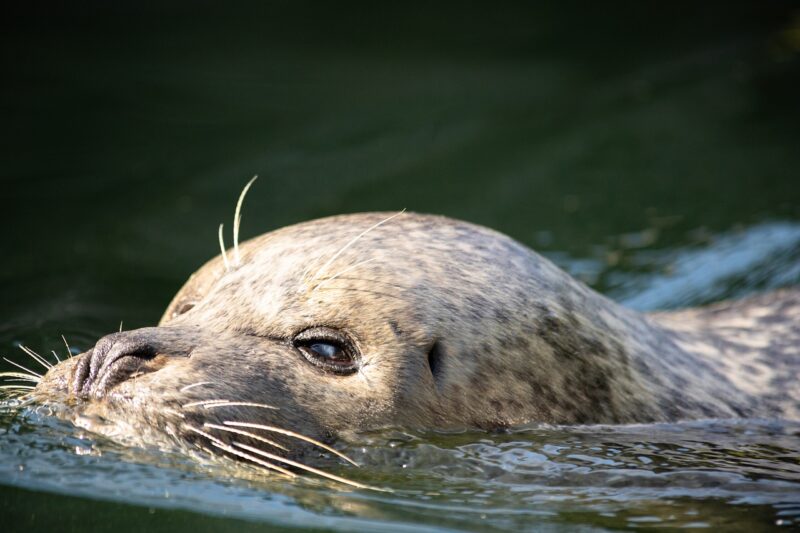How Zoos Create Enrichment Activities to Keep Animals Engaged and Happy
November 15, 2024

Zoos have evolved significantly from mere displays of wild animals to complex environments focused on animal welfare, education, and conservation. One vital aspect of modern zoos is the integration of enrichment activities designed to stimulate animals both physically and mentally. Enrichment not only prevents boredom but also encourages species-specific behaviors, enhances animal well-being, and fosters a more natural lifestyle in captivity.
1. Understanding Animal Enrichment
Animal enrichment encompasses various strategies and activities aimed at improving the quality of life for the animals in captivity. It seeks to replicate the natural conditions that these animals would encounter in the wild. The concept of enrichment is rooted in behavioral science and encompasses physical, social, sensory, and cognitive dimensions.
Some of the most recognized forms of enrichment include:
- Physical Enrichment: This involves changing the environment or providing structures that allow animals to climb, hide, or explore—activities relevant to their species’ natural behavior.
- Social Enrichment: Many species thrive in social groups. Providing opportunities for interaction with other animals enhances their social behaviors and reduces stress.
- Sensory Enrichment: Humans experience the world through sight, sound, smell, taste, and touch, and so do animals. Introducing scents, sounds, and visual stimuli keeps animals engaged and curious.
- Cognitive Enrichment: Challenging animals mentally through puzzles or problem-solving tasks encourages natural foraging and hunting instincts, vital for species like primates and carnivores.
Understanding these forms of enrichment helps zoos tailor activities to the unique needs of different animal species, ensuring that each enrichment program is beneficial and engaging.
2. The Role of Zookeepers in Enrichment Activities
Zookeepers play a pivotal role in designing and implementing enrichment activities within zoos. Their expertise, knowledge of animal behavior, and familiarity with specific species significantly contribute to the effectiveness of enrichment efforts. Here are key responsibilities of zookeepers in this process:
- Observation and Assessment: Zookeepers monitor animal behavior, health, and preferences to tailor enrichment activities to the animals’ specific needs. Identifying signs of boredom or stress is crucial for appropriate interventions.
- Planning and Creating Enrichment: Zookeepers collaborate with veterinarians and behaviorists to design enriching activities that incorporate the animals’ natural behaviors. This includes crafting puzzle feeders, creating climbing structures, or modifying enclosures.
- Implementation and Monitoring: After introducing new enrichment items or activities, zookeepers assess their impact on animal behavior to determine what works best for each species. If outcomes are not favorable, adjustments are made regularly.
Effective communication and teamwork among the zookeeping staff enhance the success of enrichment initiatives, ensuring all staff are aligned in their efforts to provide optimal care for the animals.
3. Types of Enrichment Activities
Zoos utilize a range of enrichment activities designed to engage the animals in various ways. Here are some practical examples:
- Food-Based Enrichment: Hiding food in different locations or in challenging containers encourages animals to forage, simulating natural hunting and scavenging behaviors. For instance, chimpanzees may use tools to access treats hidden within logs, while big cats will have to stalk and pounce on meat placed within their environment.
- Sensory Stimulation: Introducing different scents (like herbs or spices) or sounds (such as recorded animal calls) excites and stimulates animals’ senses, prompting exploration and engagement. This practice is particularly common among bears and elephants, who have a robust sense of smell and hearing.
- Novel Objects: Providing new and unusual items, like cardboard boxes, colorful toys, or mirrors, invites curiosity and interaction. For example, dolphins may respond positively to colorful beach balls, while birds may enjoy interacting with shiny, reflective items.
- Social Enrichment: Introducing new companions or rotating individuals among groups to facilitate social behavior. This practice requires careful monitoring to ensure compatibility and reduce stress and aggression during introductions.
The key is to keep the enrichment diverse and unpredictable, preventing animals from becoming accustomed to certain activities and maintaining a high level of engagement.
4. The Benefits of Enrichment for Animals
The implementation of enrichment activities in zoos has numerous benefits for the animals, including:
- Improved Mental Health: Engaging in enrichment activities reduces stress, anxiety, and boredom, contributing to better mental health and overall well-being.
- Encouragement of Natural Behaviors: Enrichment fosters natural behaviors in animals, helping them express their instincts in ways they cannot when confined, ultimately leading to happier and healthier lives.
- Enhanced Physical Health: Physical activities promoting exercise prevent obesity and related health issues, leading to longer lifespans in captivity.
- Better Animal Welfare in Captivity: Overall, enrichment practices significantly enhance the quality of life for captive animals, making zoos more of a conservation haven than just entertainment venues for visitors.
Investigating the positive outcomes of enrichment underscores the importance of investing in such initiatives to support animal welfare and conservation efforts.
5. Challenges of Implementing Enrichment Activities
While the benefits of enrichment are clear, implementing effective programs can present challenges, including:
- Resource Constraints: Many zoos operate on tight budgets, limiting the scope of enrichment activities. Ensuring that enrichment is sustainable and cost-effective is essential for long-term success.
- Species-Specific Needs: Different species have varying needs and preferences. Creating meaningful enrichment requires a deep understanding of each species’ natural behaviors.
- Monitoring & Evaluation: Identifying the most effective enrichment strategies for each animal requires a consistent effort in monitoring and evaluation, which can be time-consuming and labor-intensive.
- Staff Training: Proper training for zookeepers and staff is crucial for successful implementation. Without adequate knowledge, efforts may not yield the desired results and can inadvertently cause stress to the animals.
Recognizing these challenges is the first step toward effectively addressing them and enhancing the quality of enrichment programs within zoological institutions.
6. Conclusion
The evolution of modern zoos has led them to become critical players in the conservation and well-being of wildlife. Enrichment activities play a central role in ensuring that animals live fulfilling lives while in captivity. Through observation, creativity, and collaboration among zookeepers, each enrichment program can create a more engaging and stimulating environment for the animals. As zoos continue to adapt, enhance, and innovate their approaches to animal care, the emphasis on enrichment will remain paramount in promoting the health and happiness of their inhabitants.
By prioritizing animal welfare through meaningful enrichment, zoos not only contribute to the individual well-being of their animals but also educate the public, raising awareness about the importance of wildlife conservation and the challenges faced by species in the wild.








